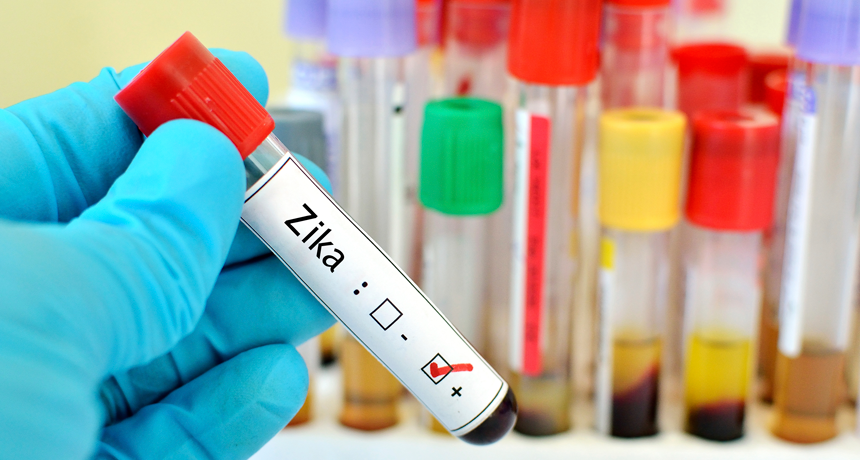Zika can damage the brains of even adults
The virus killed off certain brain cells and limited their replacement with new cells

A new study points that Zika may harm the brains of everyone, not just developing babies.
jarun011 / iStockphoto
By Meghan Rosen
A Zika epidemic has been rampaging through the Americas. A mosquito-borne virus causes the disease, and has caused few symptoms in most of its adult victims. Its big threat, this year, seemed to be the risk that it posed to babies developing in the womb. It could limit the size of their heads and result in intellectual impairments. But now a new symptom has emerged. The virus can kill stem cells and limit their numbers in the brains of adults — at least in adult mice.
These new data suggest the virus may cause unknown — and potentially long-term — damage to adult minds. Scientists described their new finding August 18 in the journal Cell Stem Cell.
Most adults infected with Zika show few if any signs. Some may develop a headache, fever, rash and mild flu-like symptoms. These may last up to a week. In rare cases, things can be far worse. People may become paralyzed for days to a month or more. This syndrome is known as Guillain-Barré (Gee-YAHN bur-RAY). It typically causes weakness or tingling in the legs. But in severe cases, people may become totally paralyzed. Until they recover, these patients may breathe only with the help of a ventilator in a hospital’s intensive care unit.
But the main reason public health officials have been concerned about Zika’s spread is that it might be picked up by pregnant women. If the virus lodges in the brain of a fetus, it could kill some of the baby’s developing brain cells. And that may have happened already in more than 1,000 babies to date. Many of them were born with unusually small heads and brains. This condition, which can be caused by a number of infections, is known as microcephaly (My-kro-SEFF-uh-lee). It can limit a child’s brain development, with impacts that last a lifetime.
But the latest study finds that babies’ brains may not be the only ones at risk. Stem cells are unusual cells. What makes them special is that they aren’t special at all. Bone cells are different from nerve cells, which are different from skin cells. One of these specialized cells can’t take the place of another. But stem cells can. They can mature into many types — sometimes any types — of cells that the body may need.
If Zika targets newborn brain cells, it might do the same in adults. Or at least that’s what Joseph Gleeson had worried. Gleeson is a neuroscientist of Rockefeller University in New York City. Parts of the forebrain and the hippocampus play a major role in learning and memory. Both areas in the adult brain continue to make nerve cells. So Gleeson and his team decided to investigate whether those stem cells might be vulnerable to Zika.
And they were in the adult mice that they infected with Zika. The virus hit these brain regions hard. Nerve cells died. And in the forebrain and hippocampus, fewer new stem cells emerged. How few? The affected parts of the brain in these mice made just half to one-fifth as many new cells as did those areas in healthy mice.
It’s possible that people may not react the same way. One reason: The test mice were special. They had been genetically engineered to have weak immune systems. And that made them especially likely to pick up a Zika infection.
But Zika could potentially harm people who already have an impaired immune system, the authors say. It’s even possible that healthy people may be affected as the mice were. Clearly, more research is needed.







